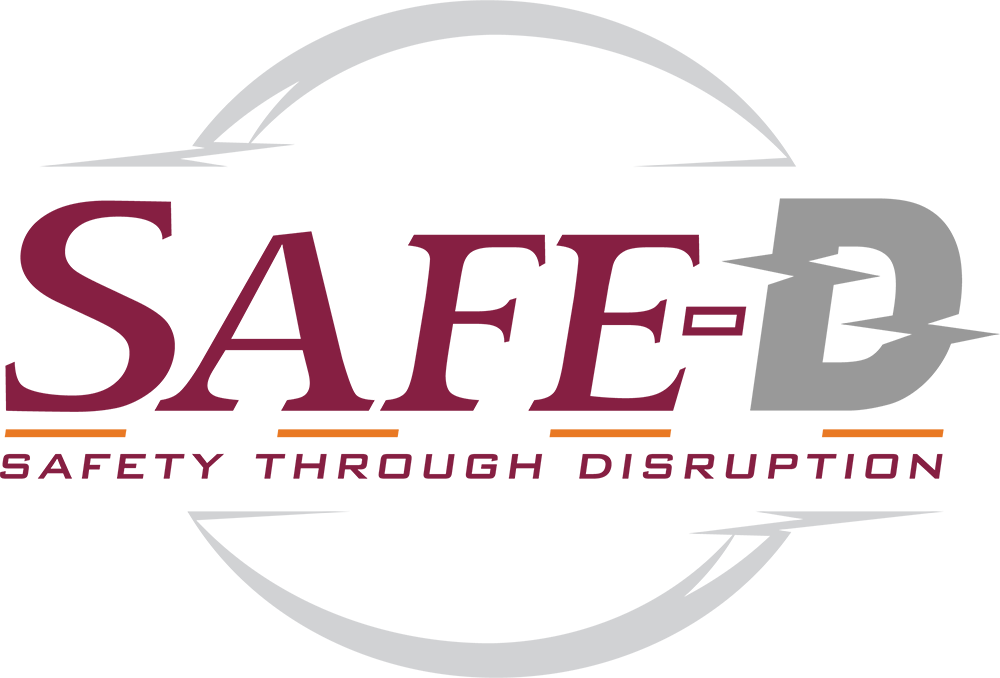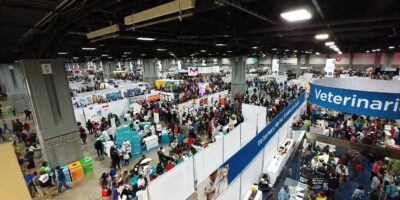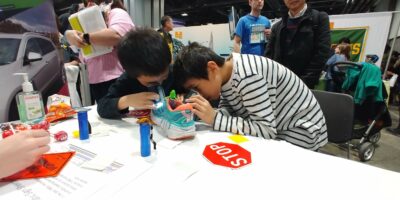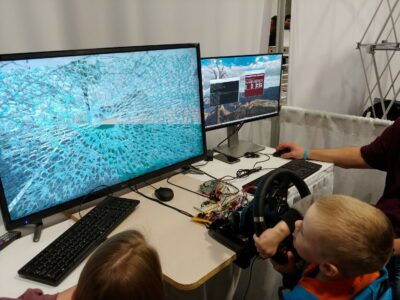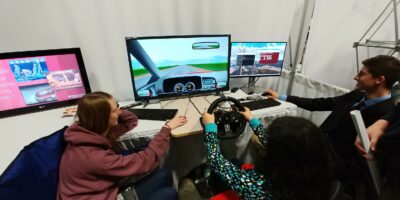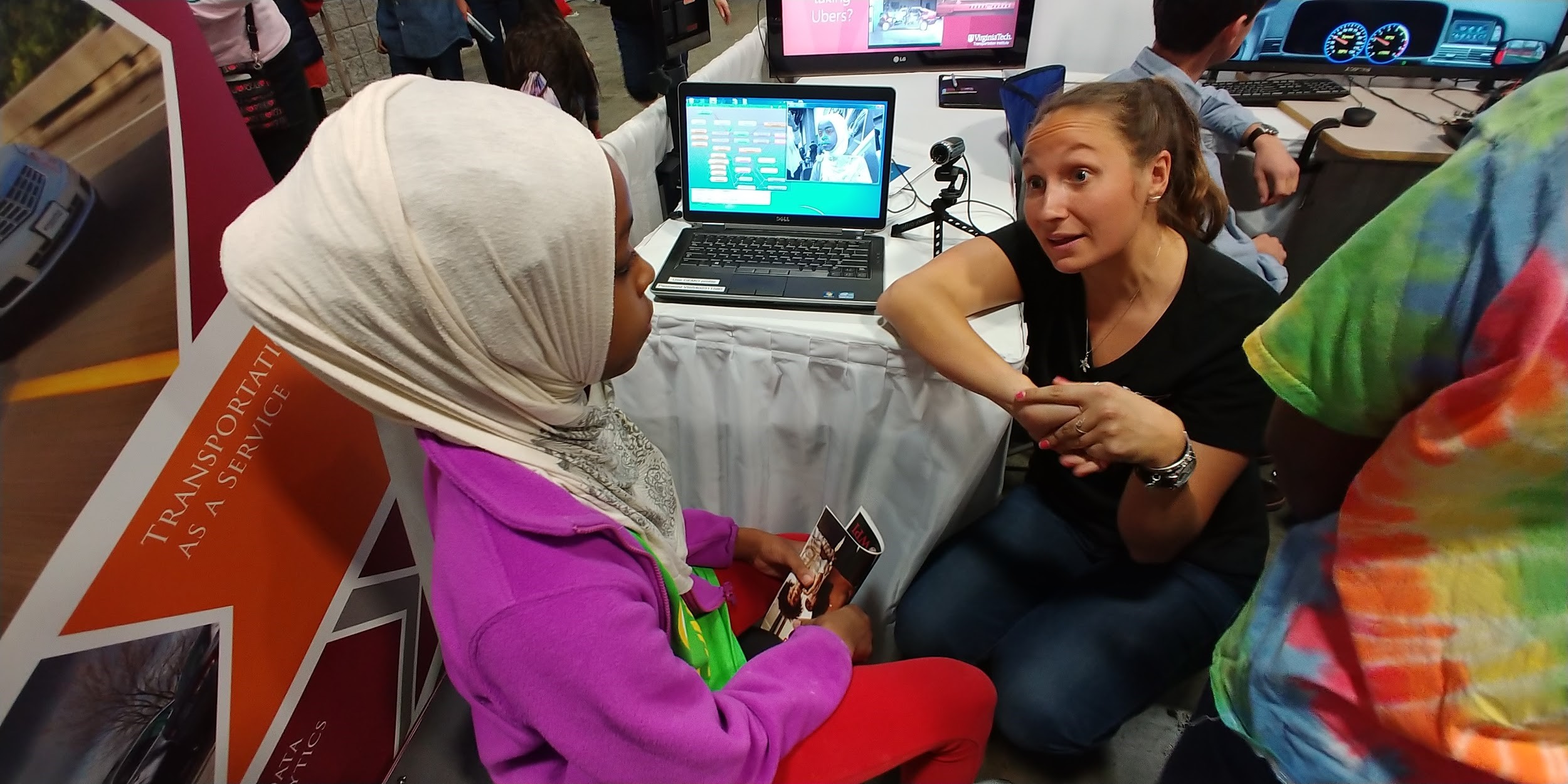
On April 6-8, Safe-D researchers attended the USA Science & Engineering Festival in Washington, DC in an outreach effort focused on transportation safety and innovative technology in the transportation industry.
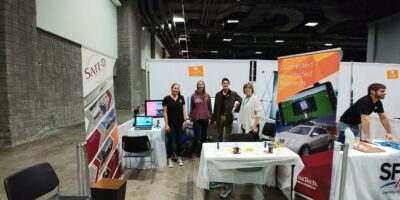
[/media-credit] The Safe-D UTC booth staffed by Lexi Basantis (VTTI), Lea Huntington, Ben Ledesma, and Martha Raney (TTI)

[/media-credit] A look at the Safe-D UTC booth during the event staffed by Miguel Perez and Zac Doerzaph (VTTI)
The USA Science and Engineering Festival was held in Washington, D.C., on Friday, April 6, 2018, through Sunday, April 8, 2018. This event was free and open to the public and showcased a variety of different STEM organizations and demonstrations for attendees of all ages. The event attracted over 340,000 K-12 students in addition to over 500 exhibitors.
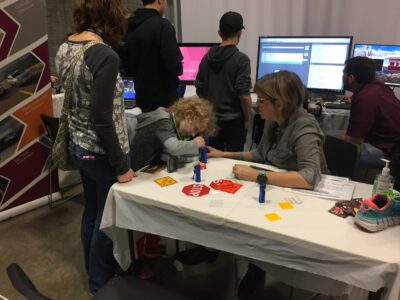
[/media-credit] Martha Raney (TTI) demonstrates retroreflectivity using handheld microscopes and small samples of reflective material
The Safe-D National UTC was represented at the festival at a booth staffed by volunteers from the Virginia Tech Transportation Institute (VTTI) and Texas A&M Transportation Institute (TTI).
The booth exhibited 3 different demonstrations related to transportation safety and innovative technology in the transportation industry.
The first demonstration showcased was the retroreflectivity activity, originally created at TTI. At this station, students could look at retroreflective materials with small handheld microscopes.
Students could see the glass beads that made up the materials and how the different shapes affected the way light was reflected off of the materials. In addition, students learned about retroreflective materials in applications aside from transportation (e.g. reflectors on shoes or clothing).
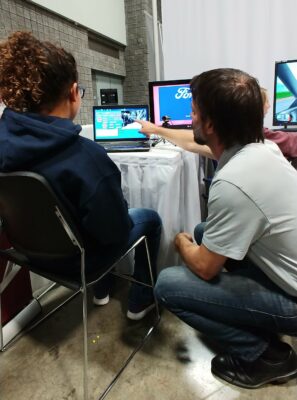 rschnitz | Safe-D
rschnitz | Safe-D rschnitz | Safe-D
rschnitz | Safe-D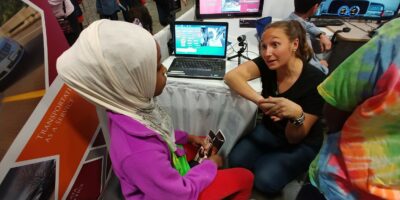
[/media-credit] Zachary Doerzaph, Miguel Perez, and Lexi Basantis (VTTI) demonstrate the Mask software to students
Students were able to sit in front of the camera and have their face mapped with the software. They learned about facial recognition software, where it can be found in their daily lives, and its applications in transportation safety research.
The final demonstration was the vehicle simulator, brought from TTI. This simulator allowed students to experience what it would be like if an automated vehicle would malfunction.
Students would sit in the seat and “drive” the simulated vehicle while a researcher controlled the steering wheel, speed, and vehicle actions. The students were required to intervene and try to correct the simulated issues.
